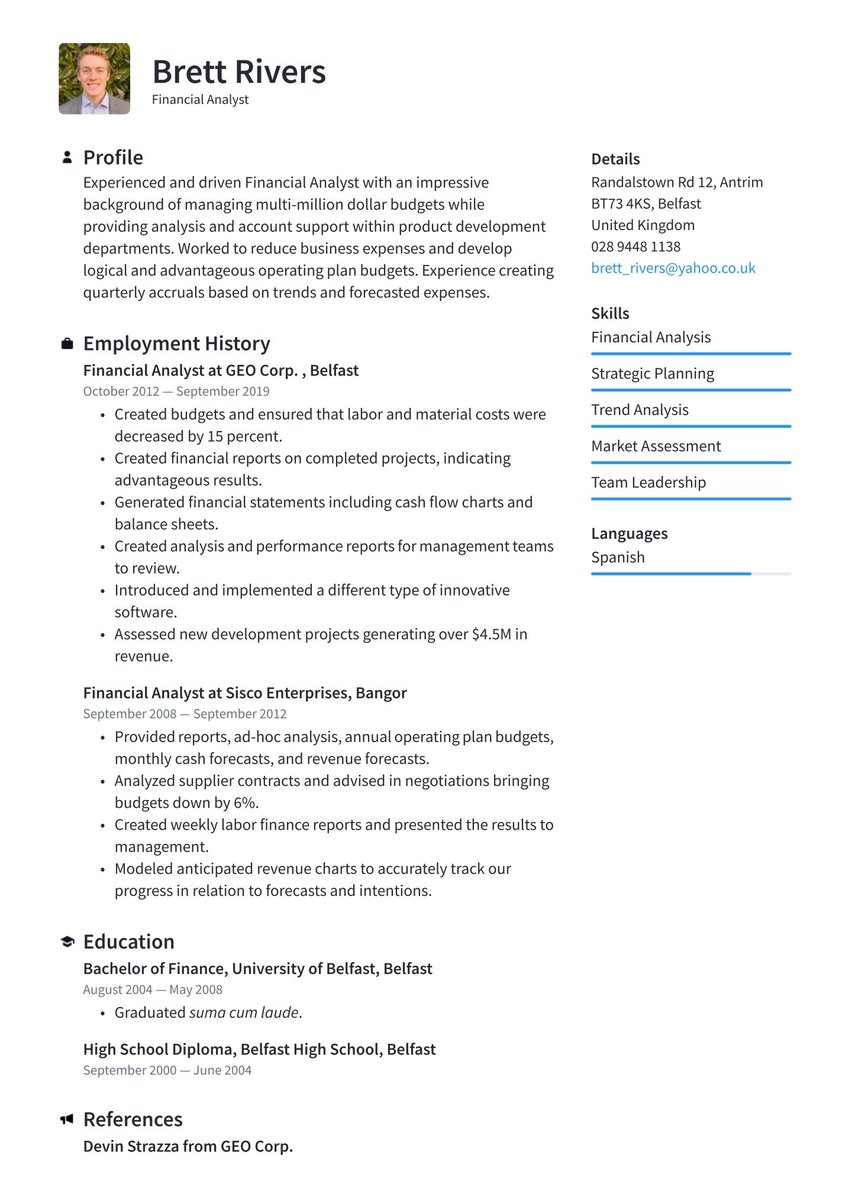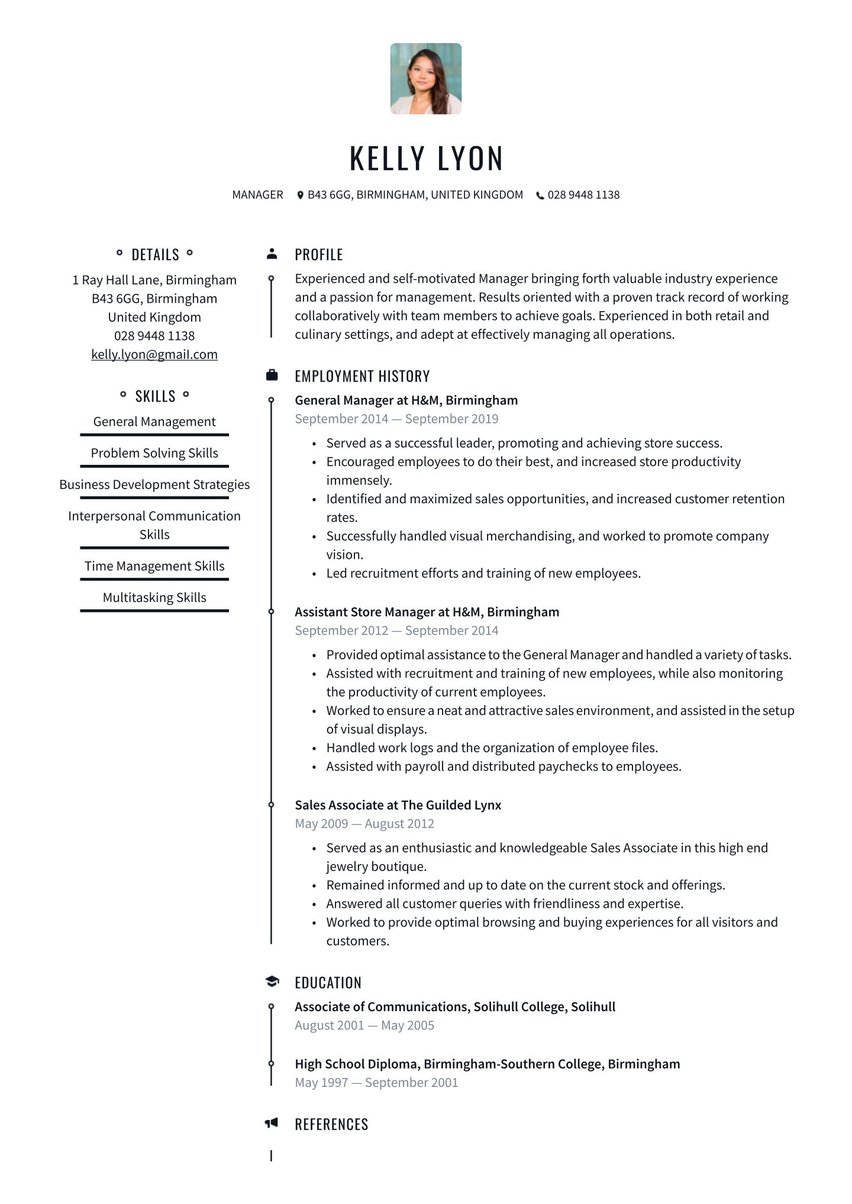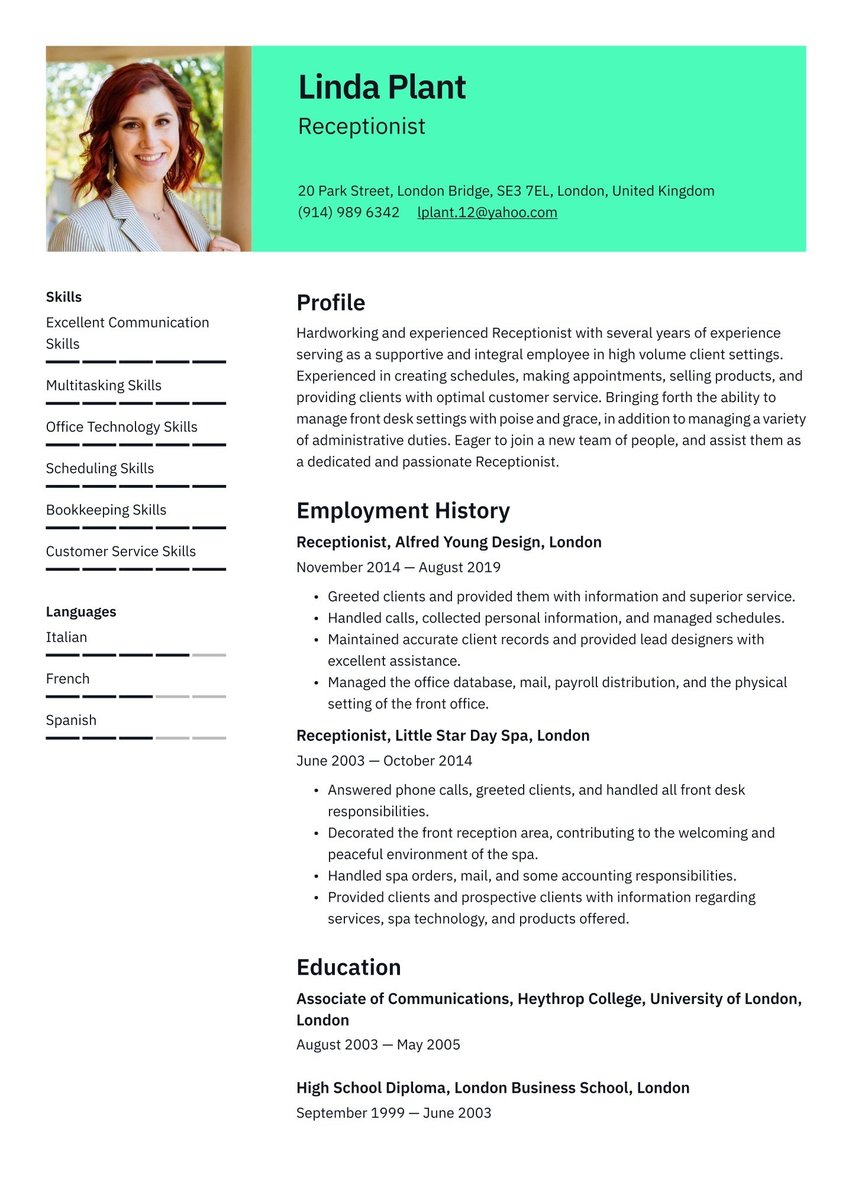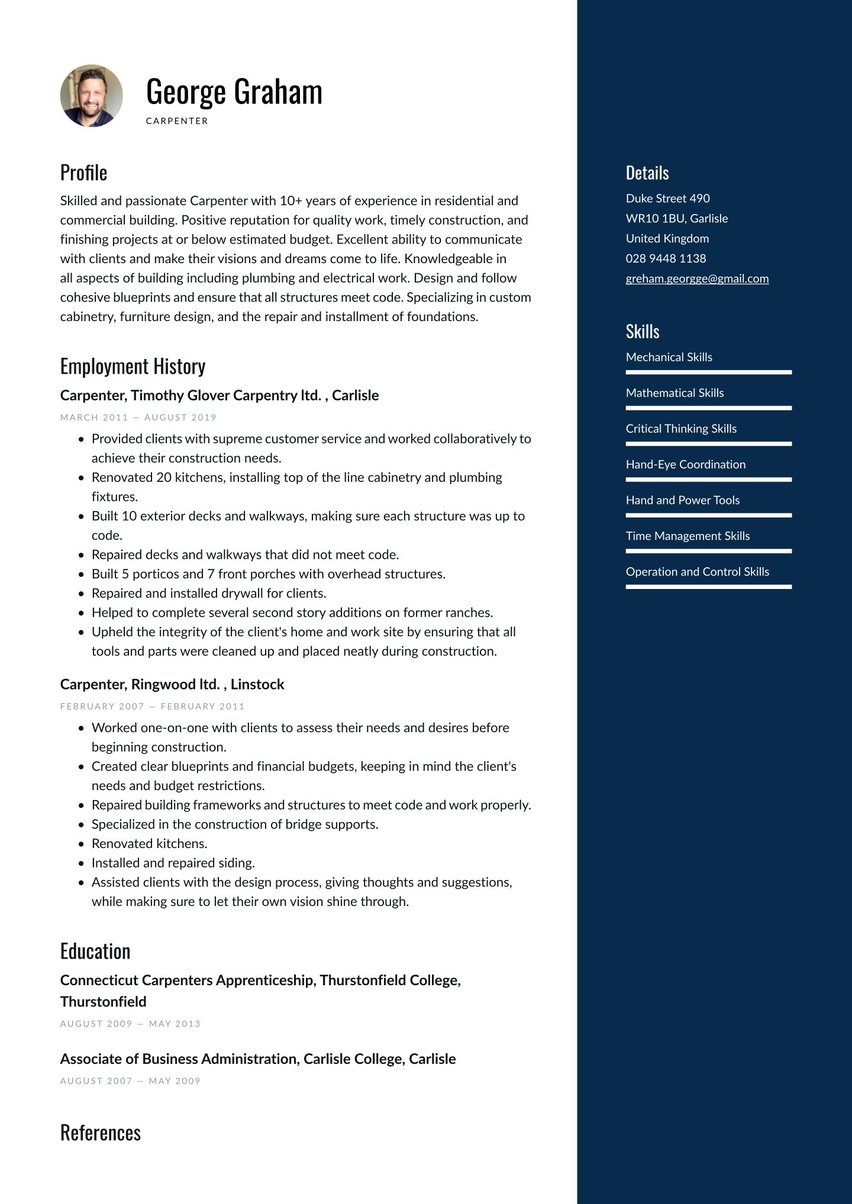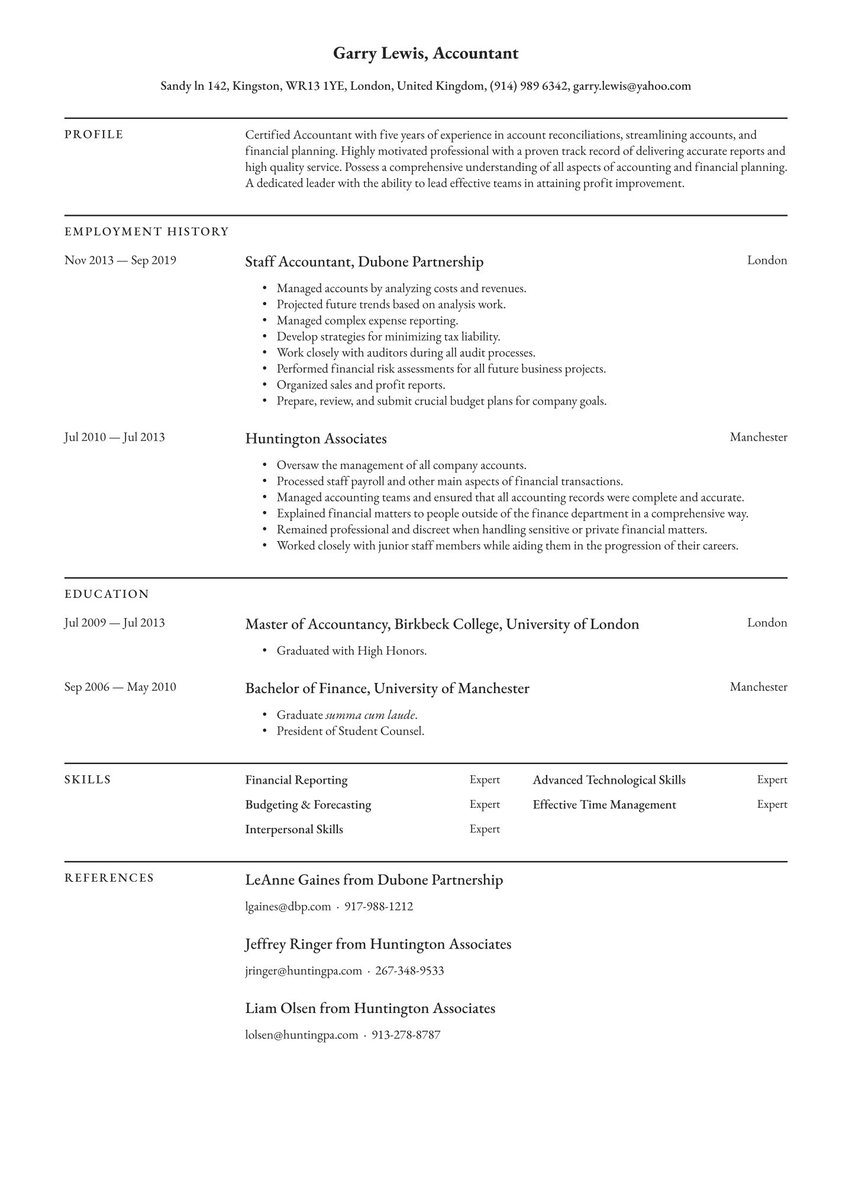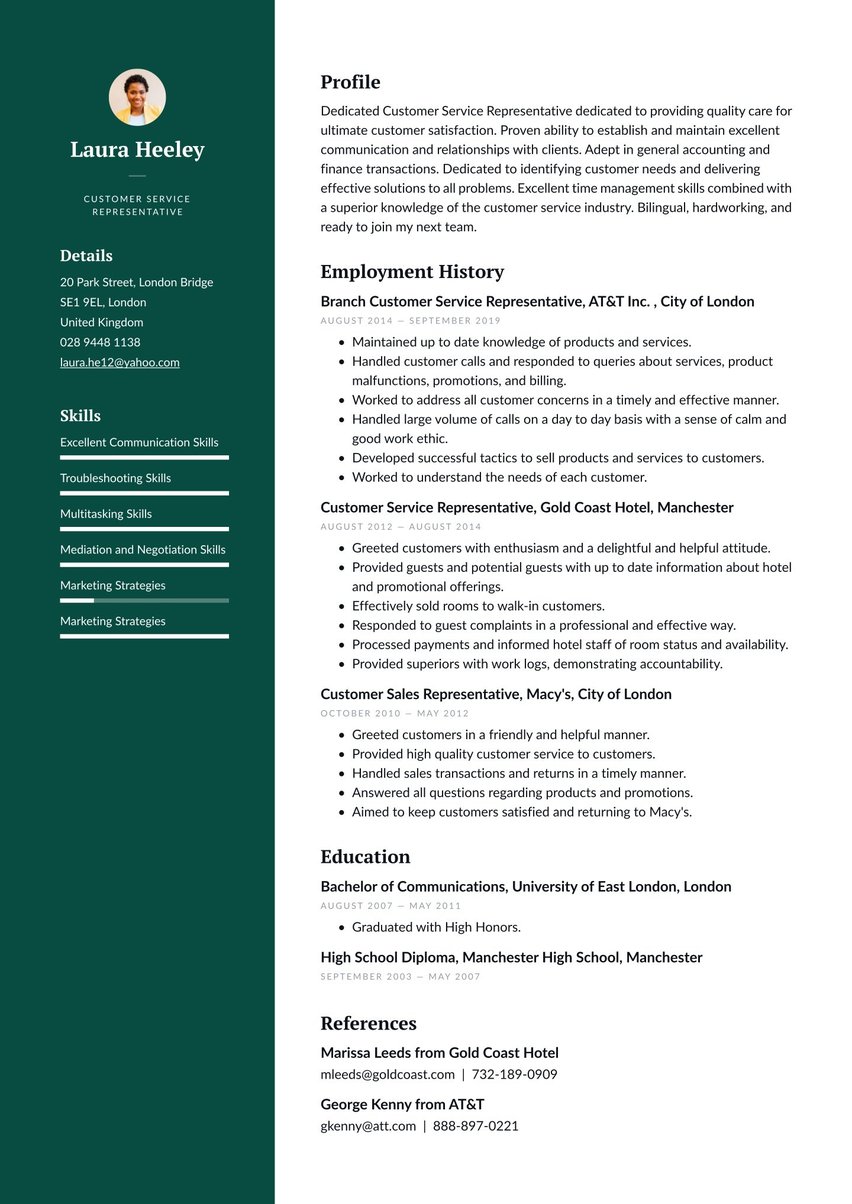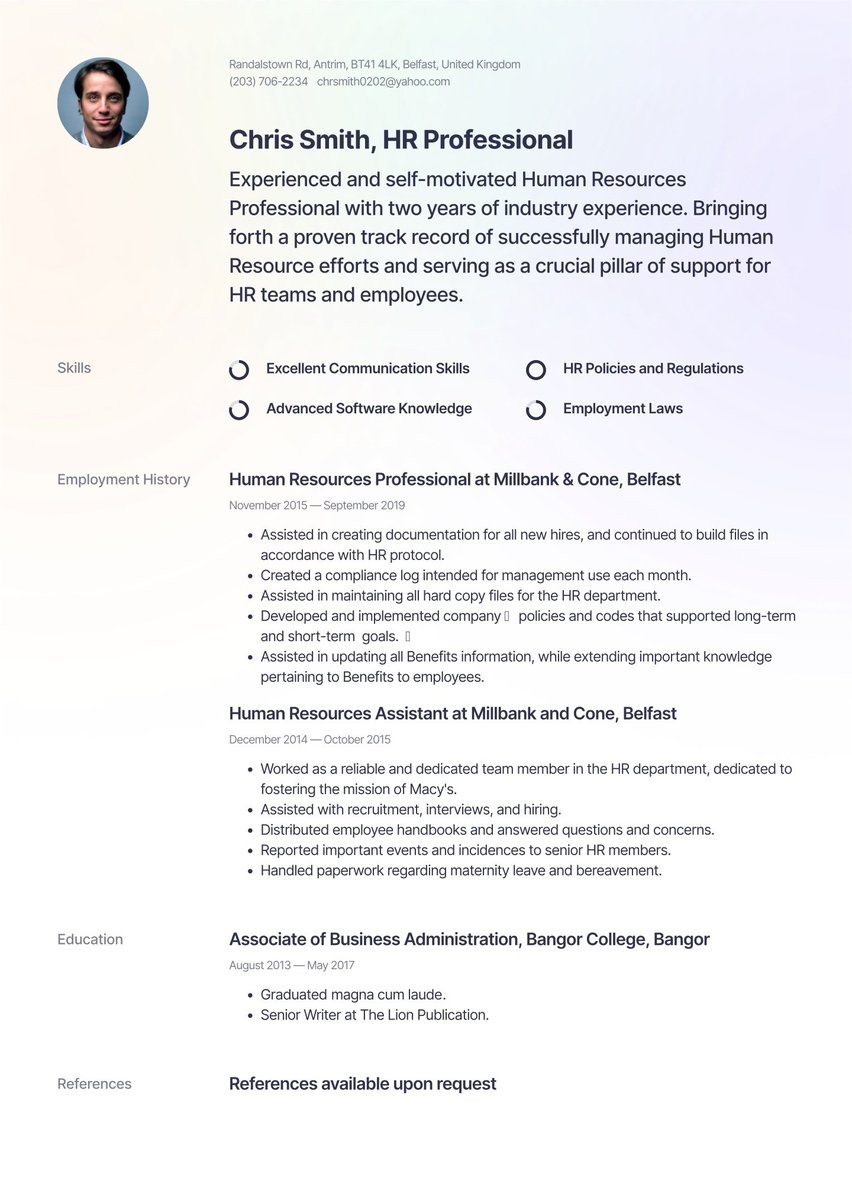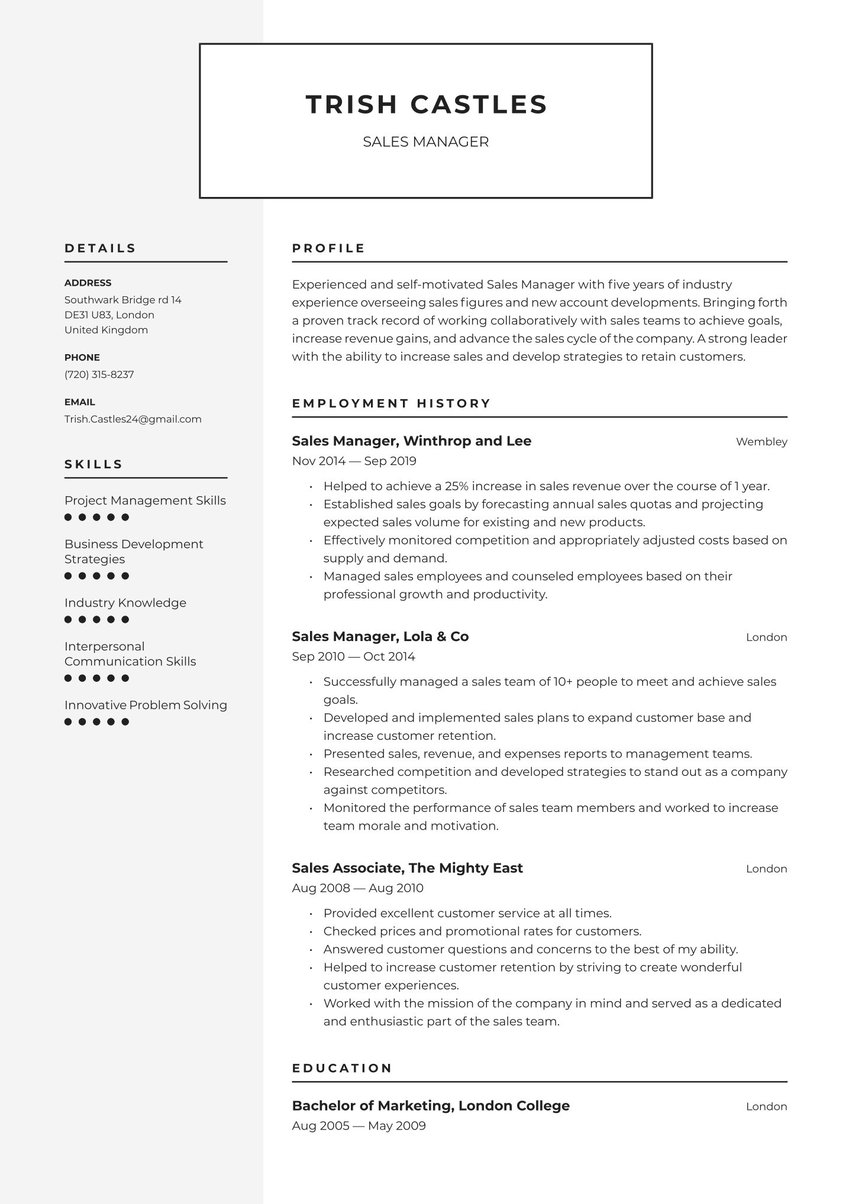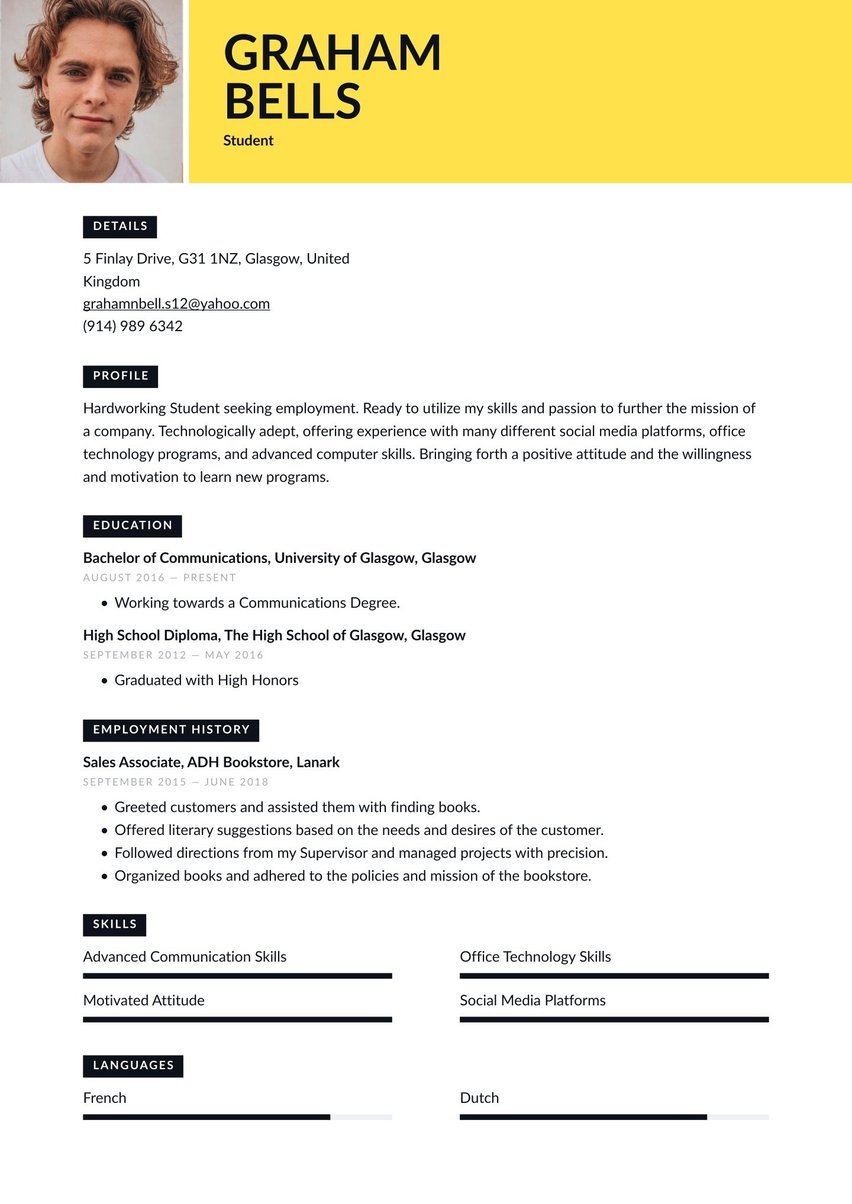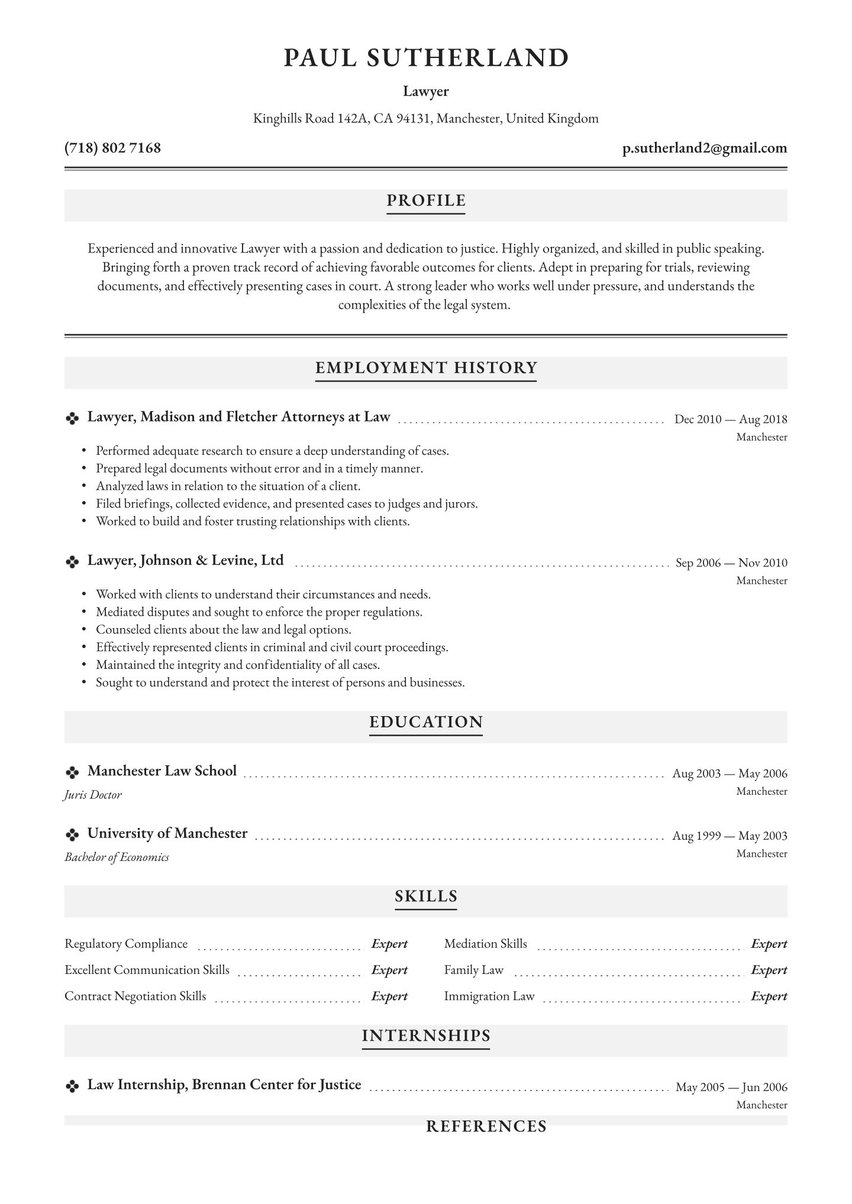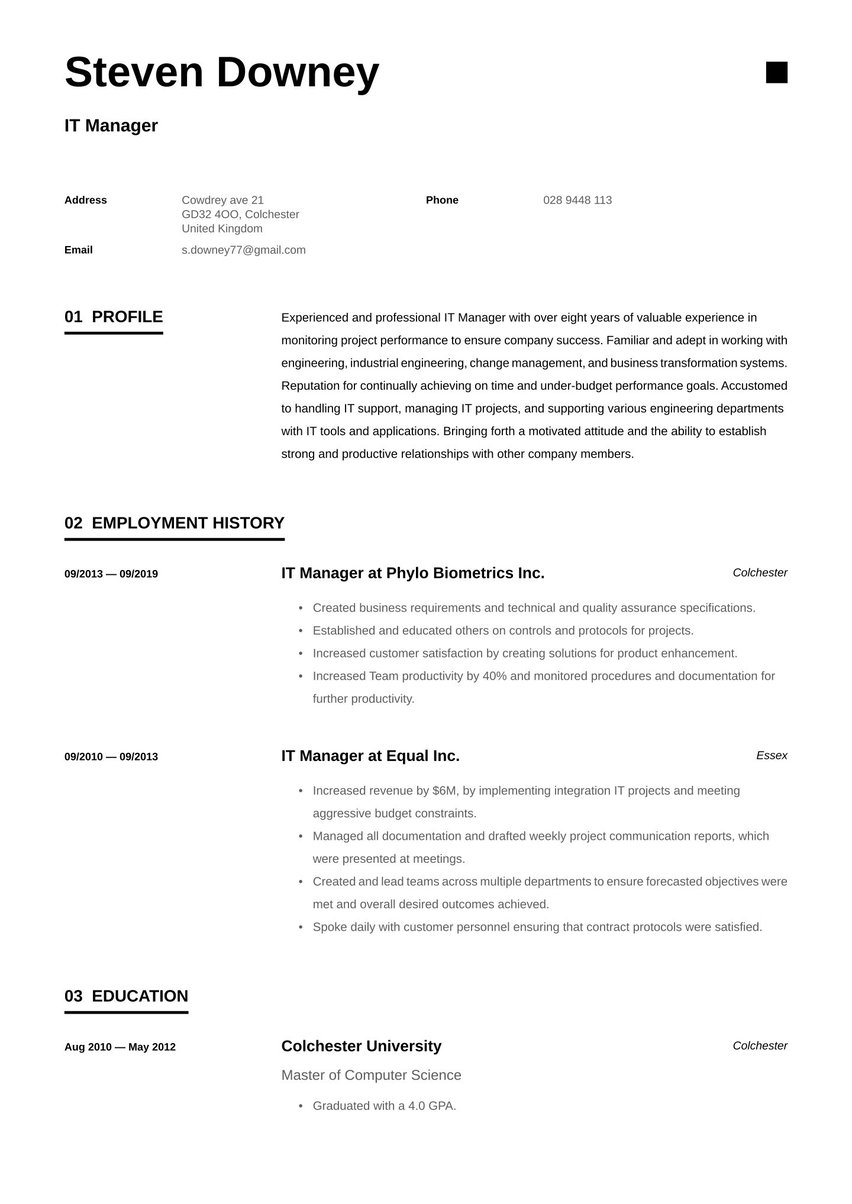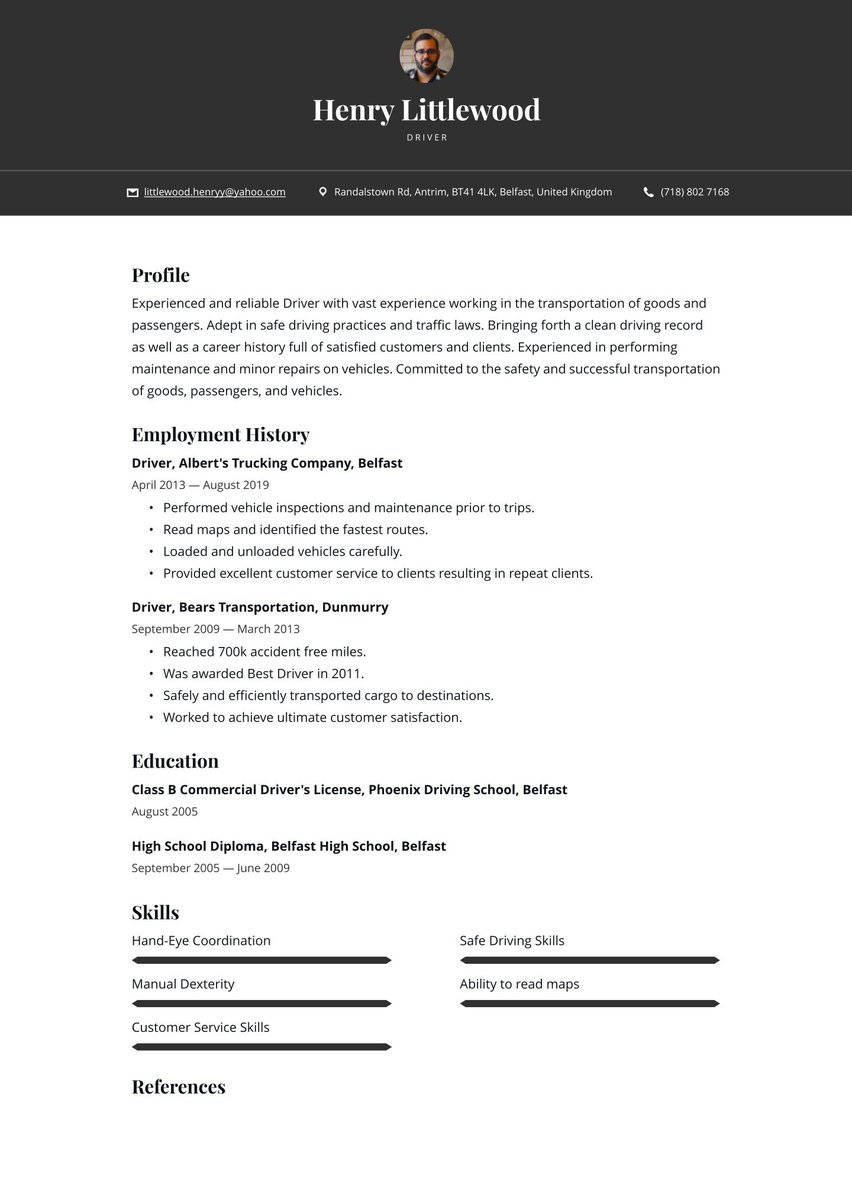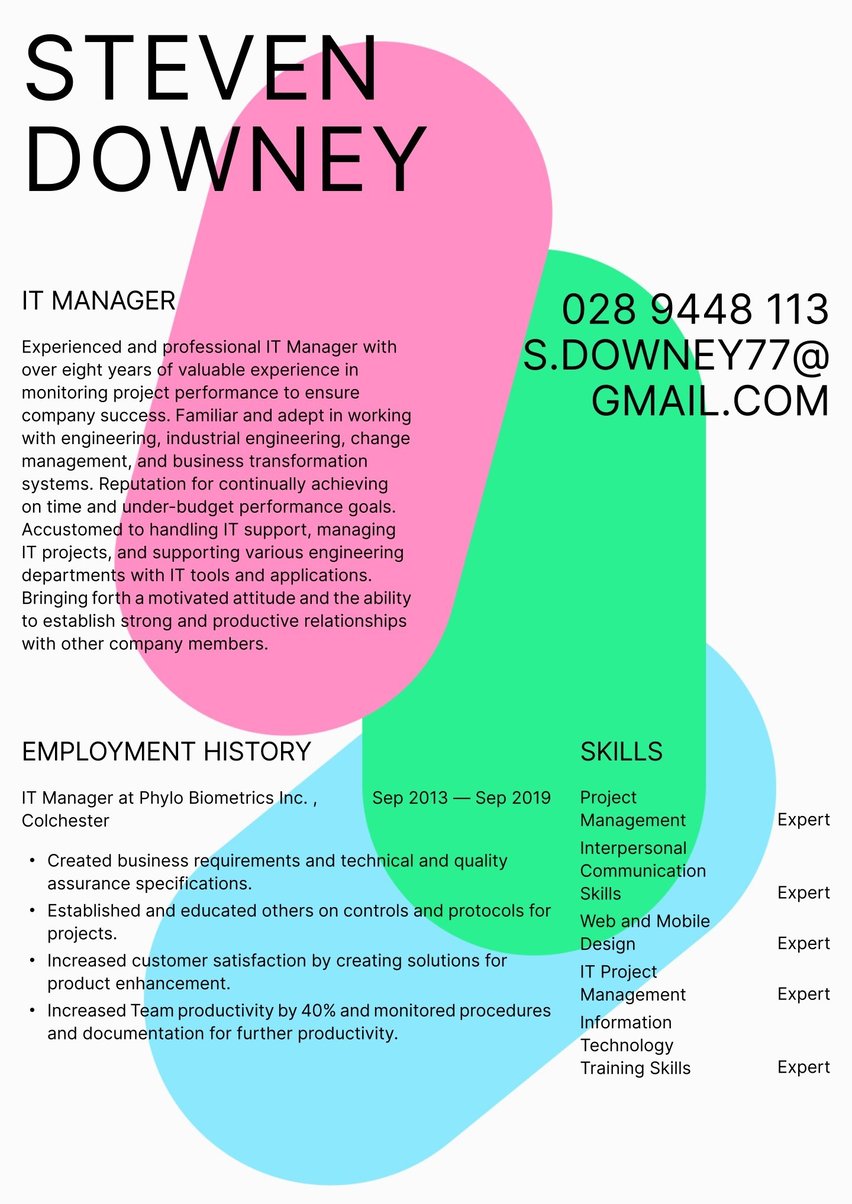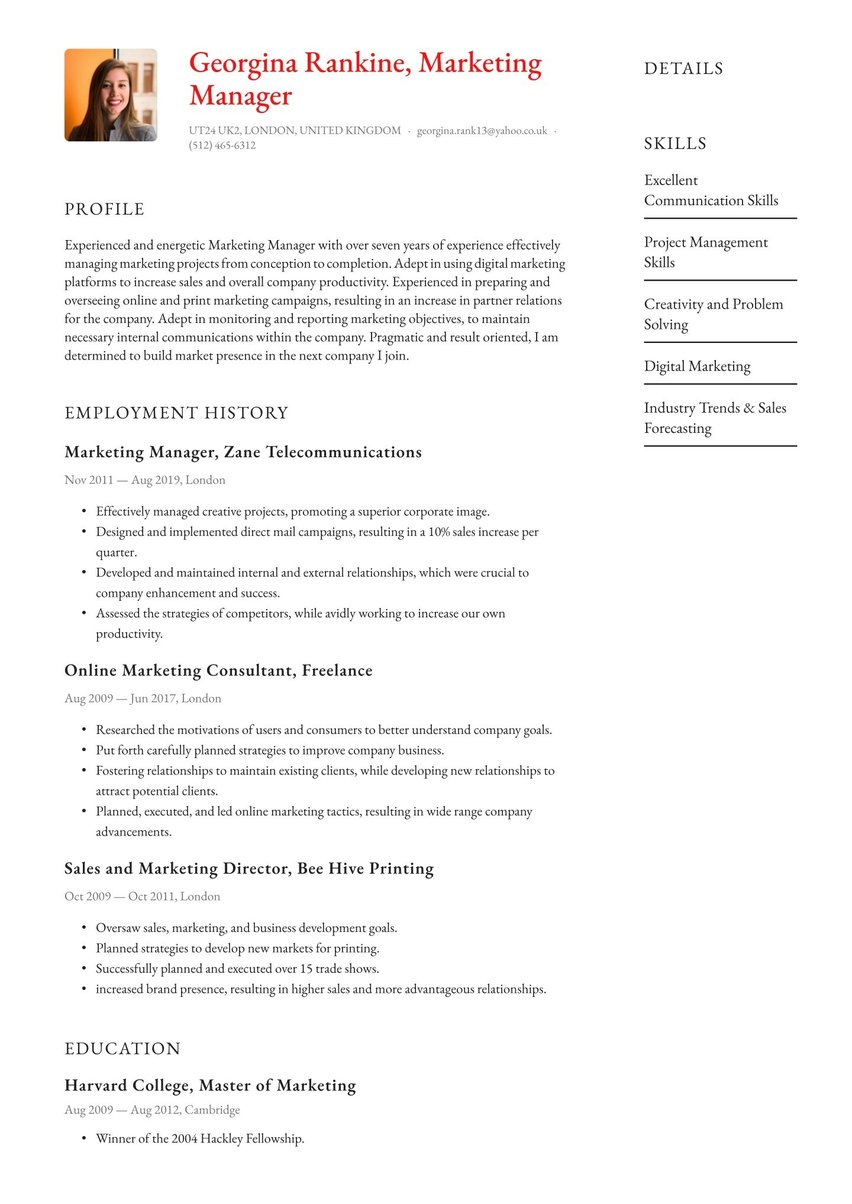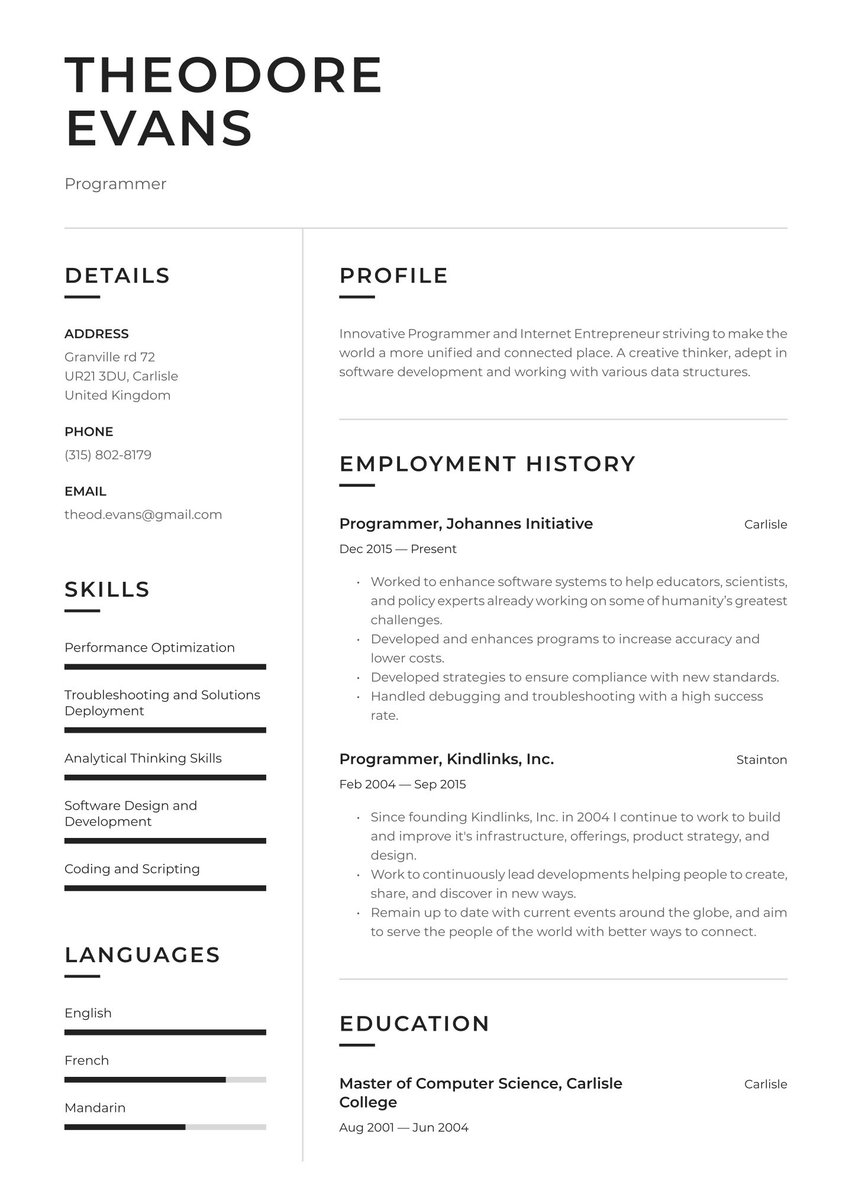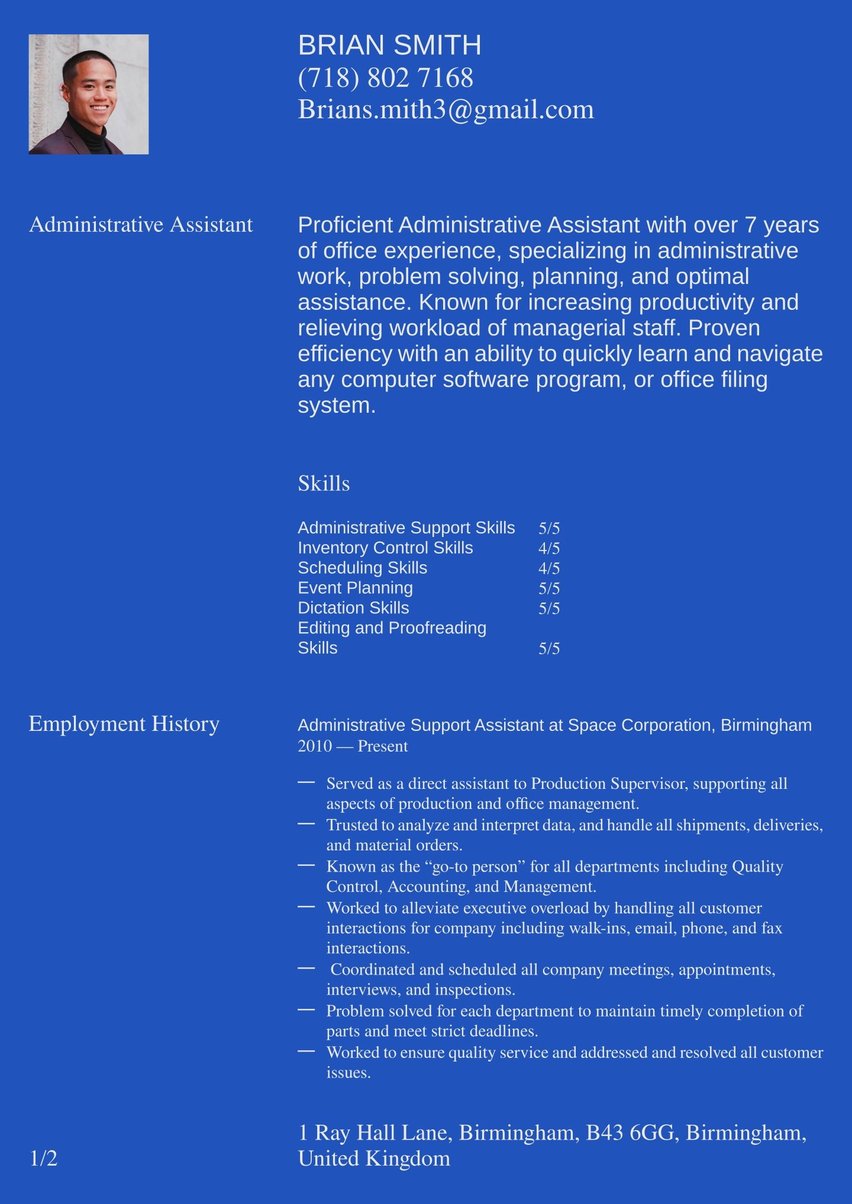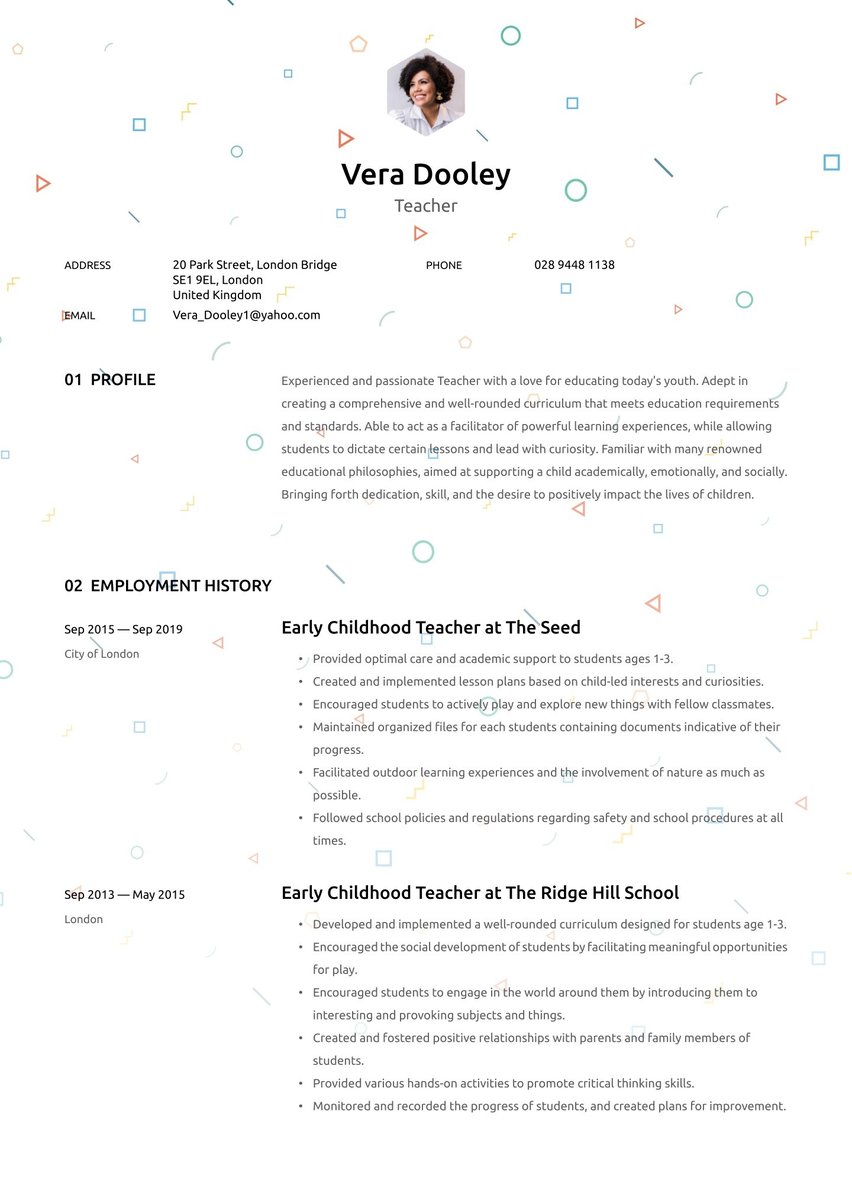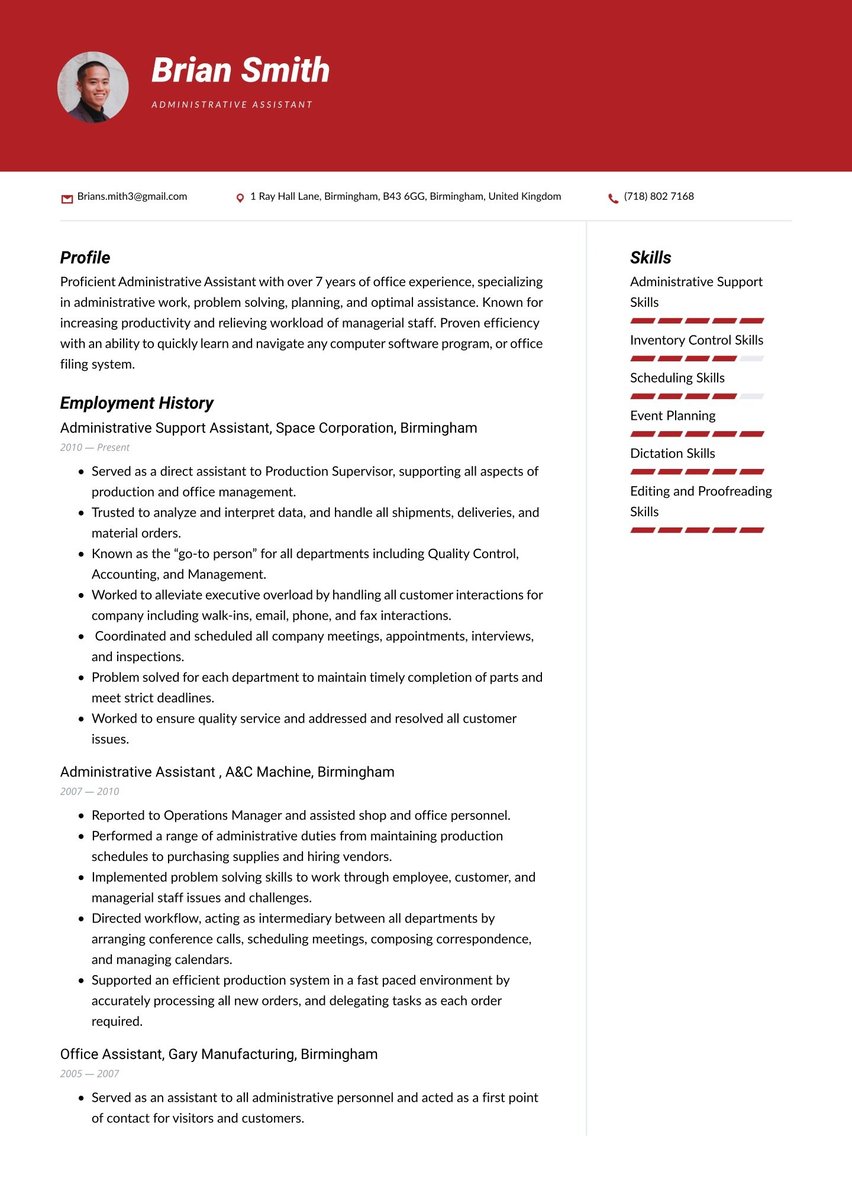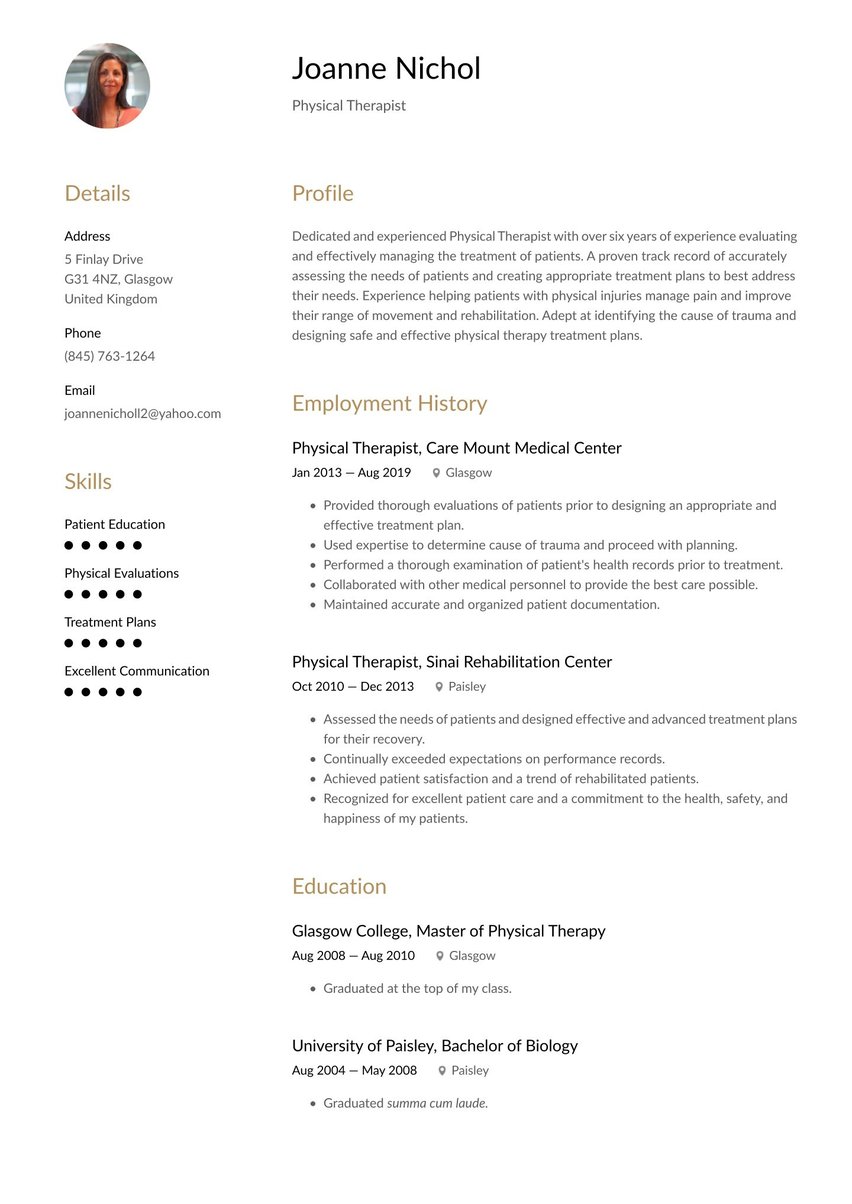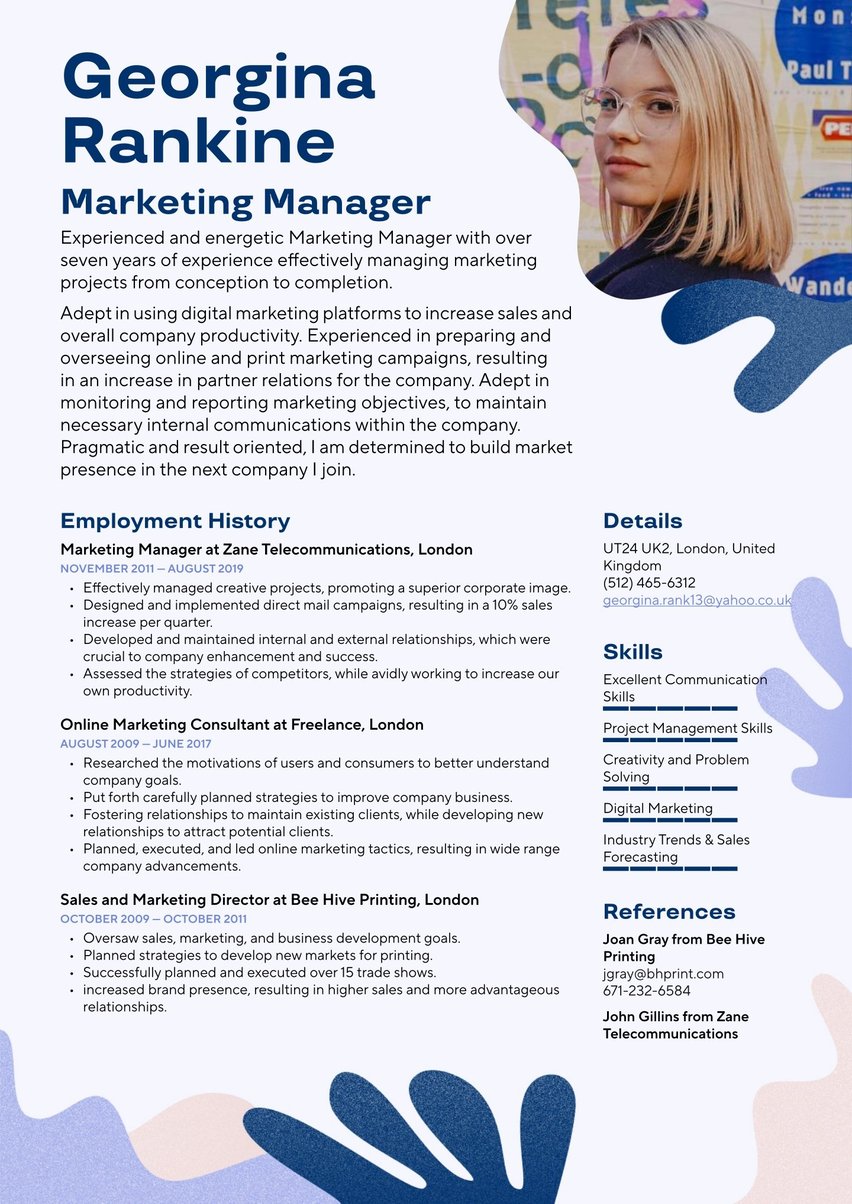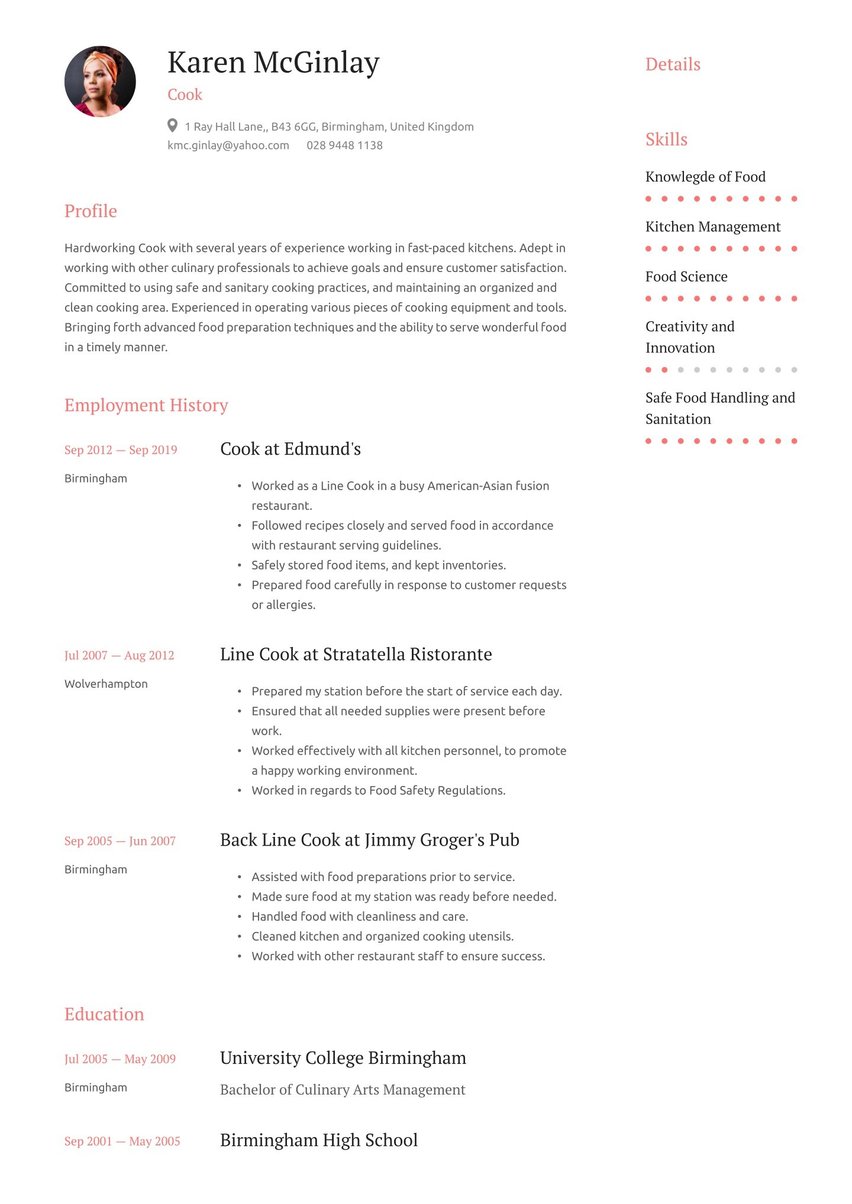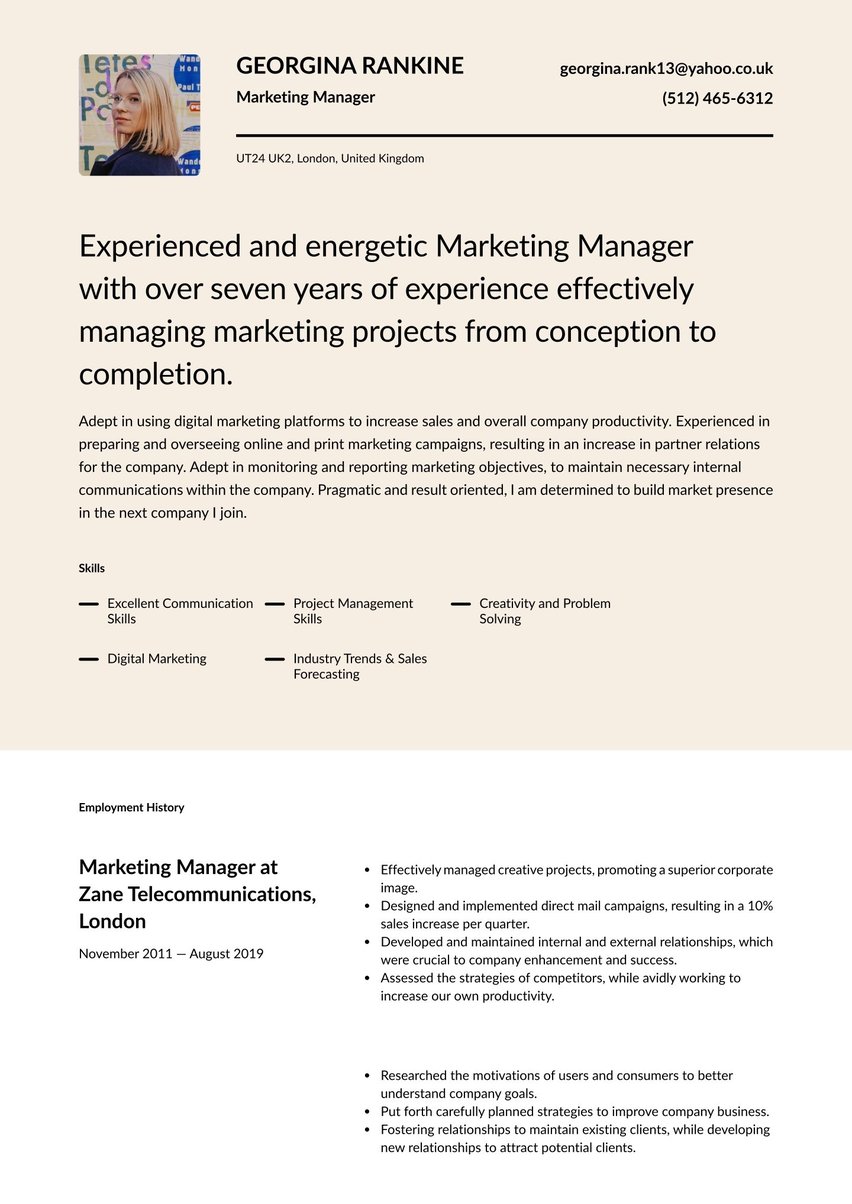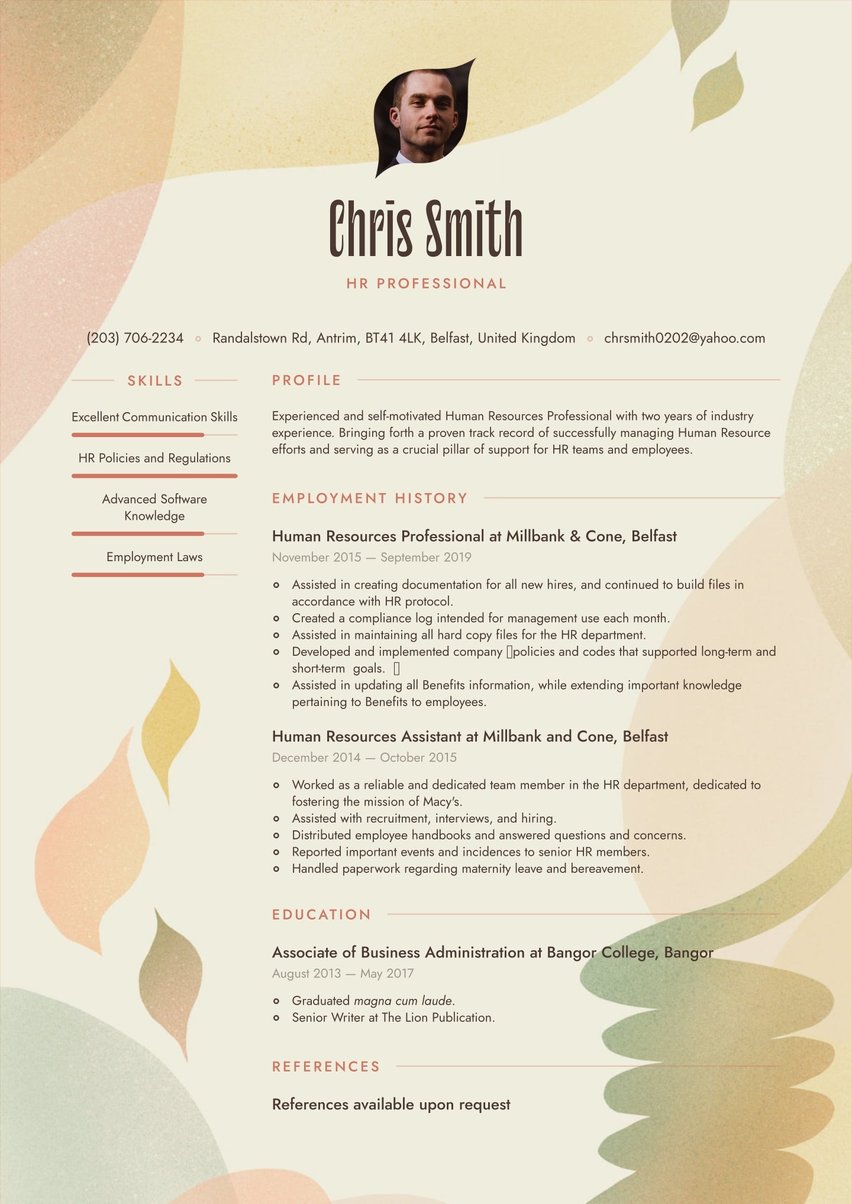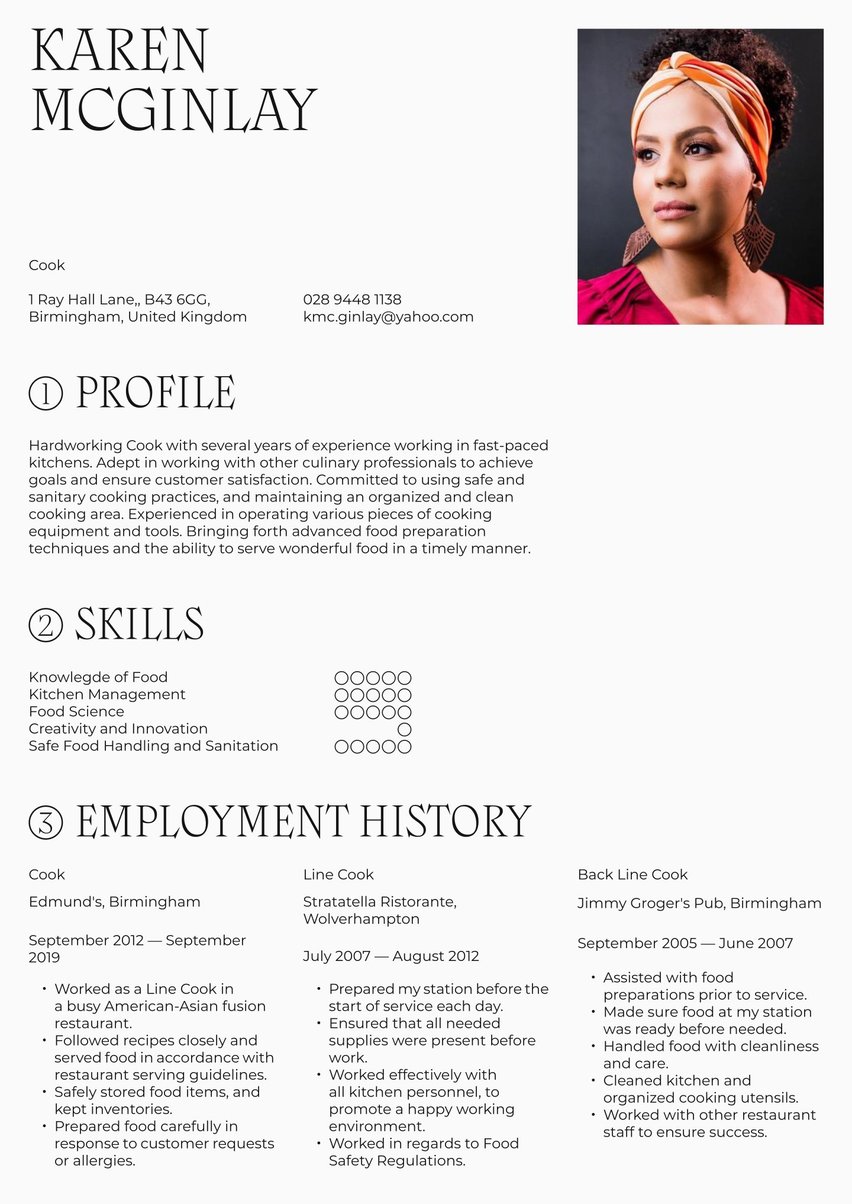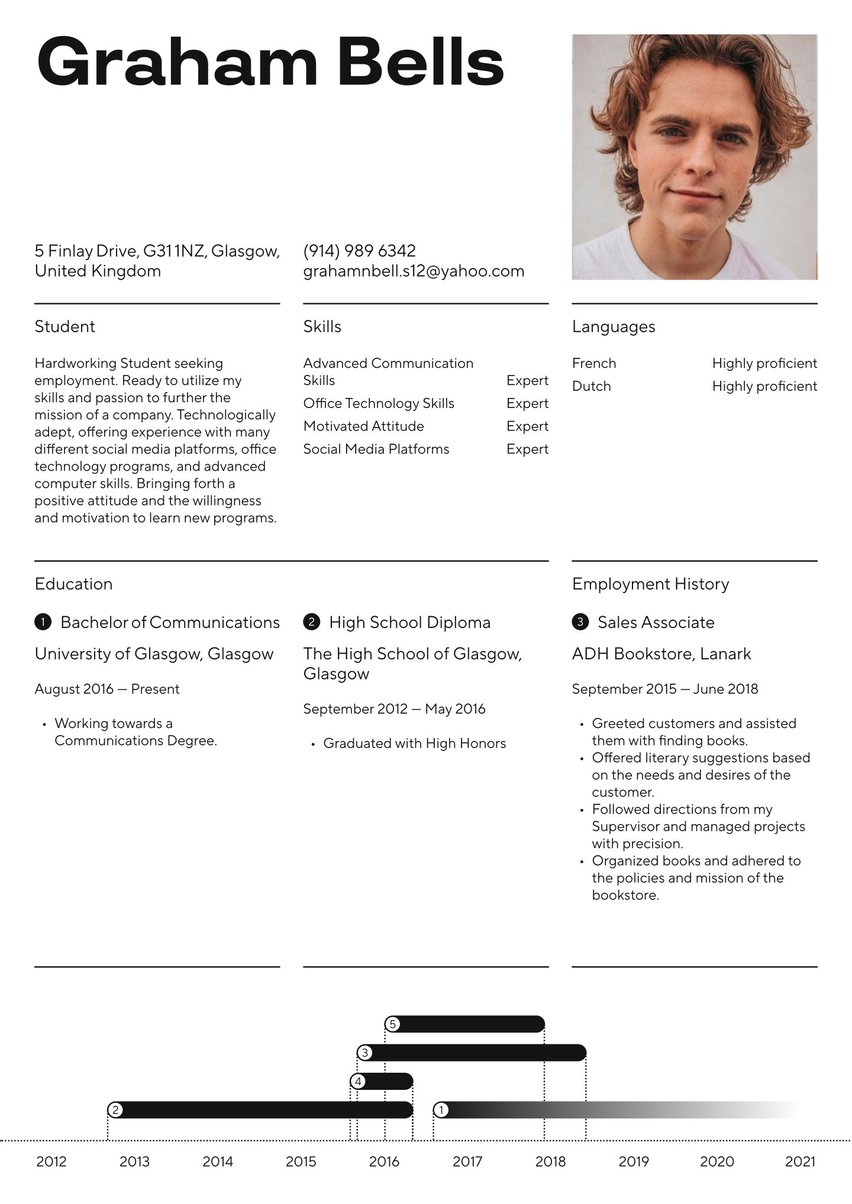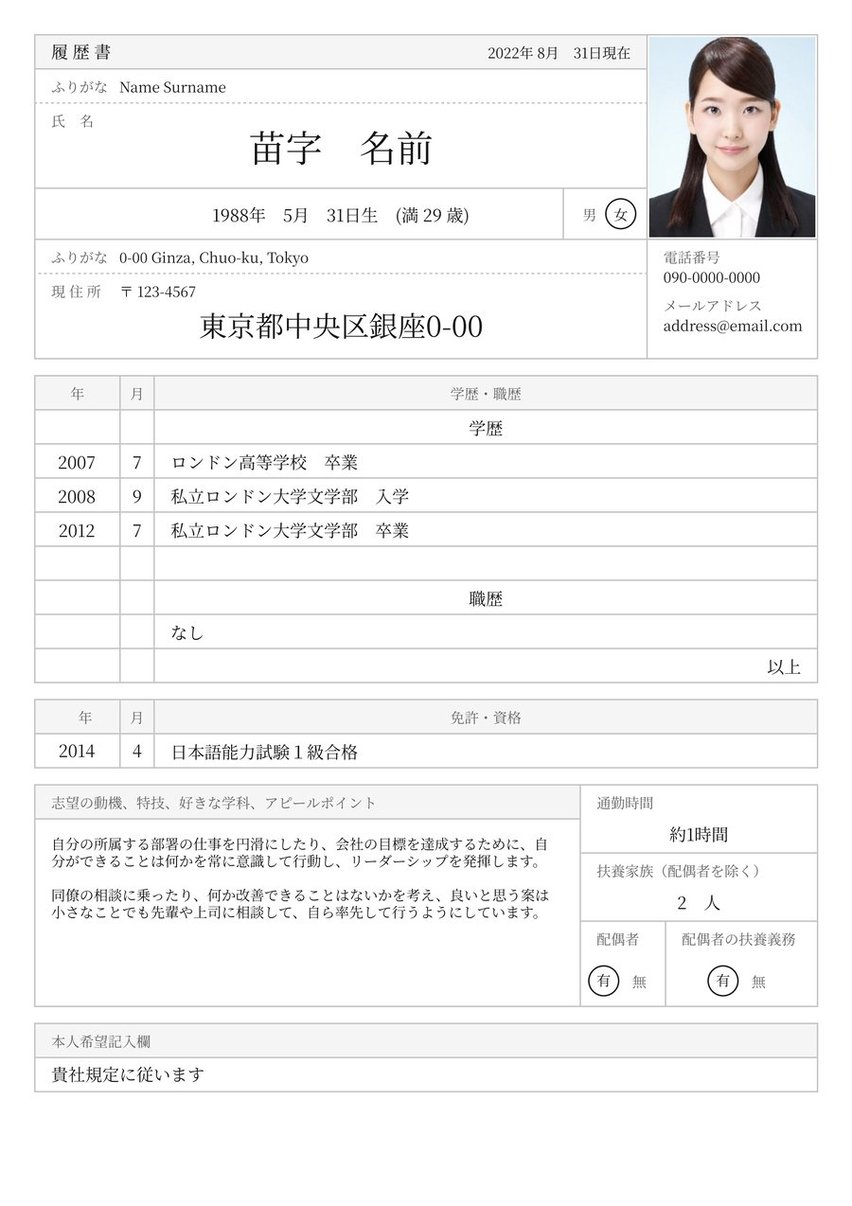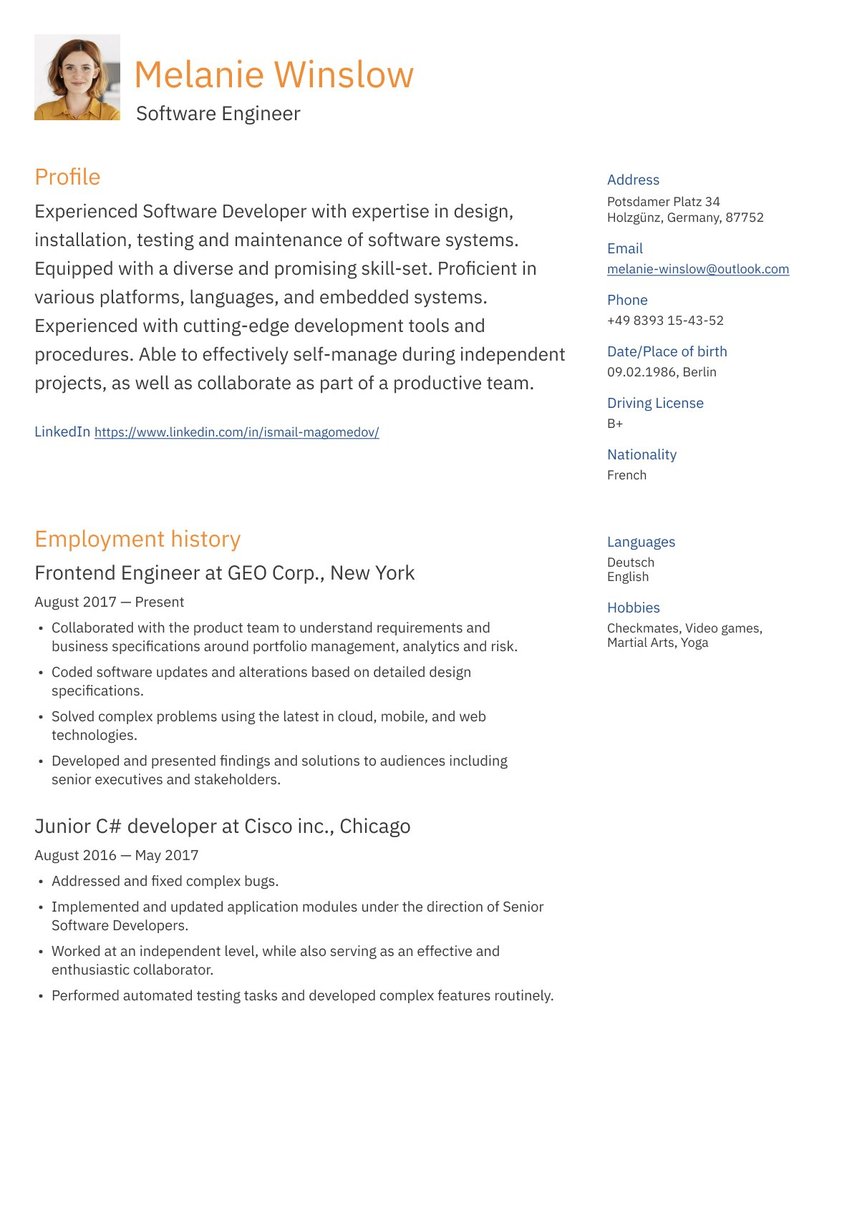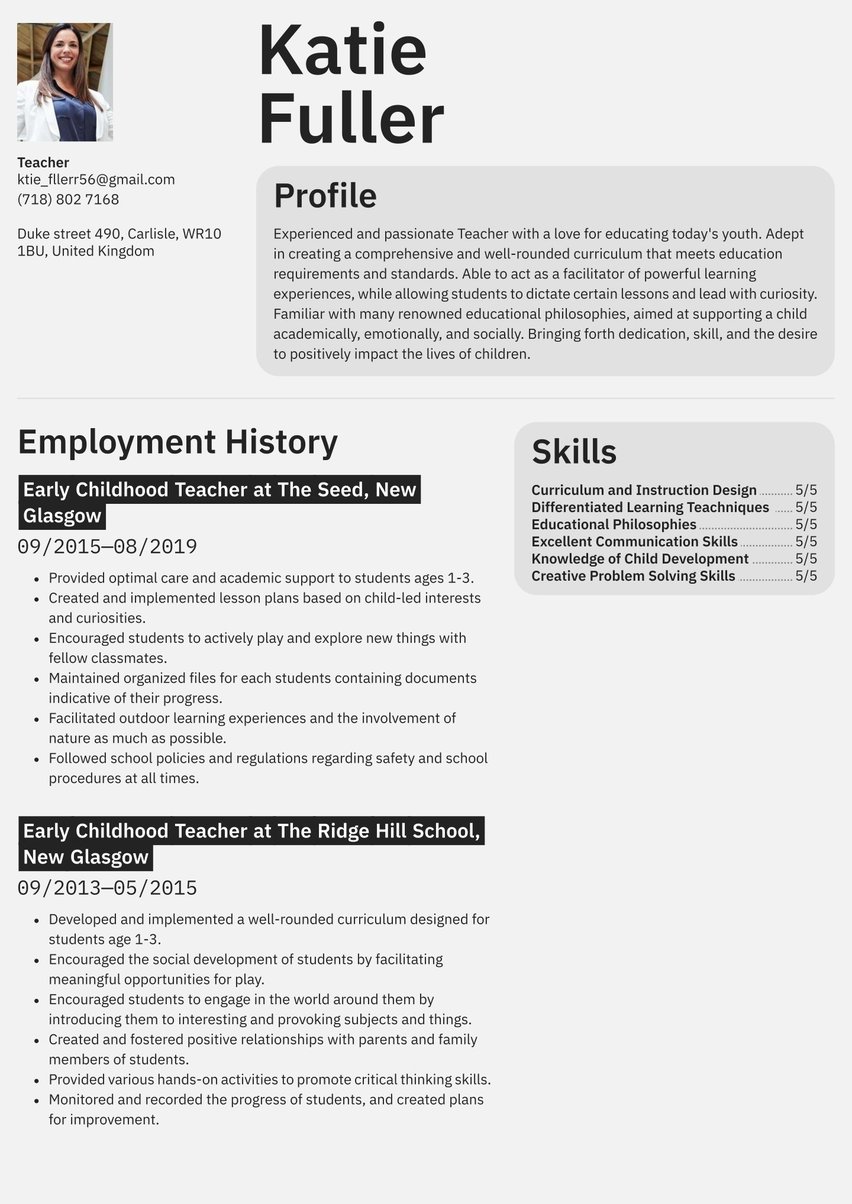Computer scientist with five years of experience in tech sector. Two years spent managing research teams and managing network strategy with key stakeholders. Ability to understand complex data storage issues. Highly skilled at improving or designing new LAN, SAN and VoIP networks.
01/2022 - present, Computer Scientist Team Lead, The Computing Group, Edinburgh
- Responsible for LAN and SAN infrastructure design.
- Leading a team of five to exceed budgetary and timeline goals on client projects.
- Agreeing on and designing new storage strategy with CTO and leading roll out leading to 15% increase in workflow efficiency.
- Recruitment and training of new team members.
02/2017 - 01/2022, Computer Scientist, Johnson Computing, Edinburgh
- Provided support to clients and internal staff members.
- Diagnosed risks in network security and liaised with relevant parties for maintenance and improvement.
- Built and maintained positive client relationships on an ongoing basis.
09/2013 - 06/2016, BSc Computer Science, University of Edinburgh, Edinburgh
- LAN
- SAN
- VoIP Network Administration
- Network Design and Analysis
- Improving Data Storage
- Influencing Stakeholders
- Team and Project Management
- Creative Problem Solving
Do you have a technical mind? When you create a computer science CV, you need to take care with detail and precision, just as you would in your computer scientist role.
While your CV needs to showcase your technical prowess, you also need to consider your audience. The first person that reviews your CV may be your future boss, but it also could be a recruiter who might not understand the finer details of your technical expertise.
Demonstrating your ability to communicate effectively with both technical and non-technical audiences via your CV is one way to set yourself apart from your peers.
In this CV guide we’ll show you exactly how to create a CV for computer science job openings that ticks both these boxes so that you can land the best opportunities.
CV guide for a computer science CV
Crack the code with the help of resume.io. Our guides and CV examples cover over 170 professions, and our CV builder makes it easier than ever to create a compelling CV for computer science jobs or any others you may pursue.
This CV guide and corresponding computer science CV example will cover the following:
- How to write a computer science CV
- Choosing the right CV format for computer science
- How to add your contact information
- Using summaries
- Adding your computer science experience
- Listing education and relevant experience
- Picking the right CV design/layout
- What the computer science job market looks like, and what salary you can expect
How to write a computer science CV
Before you get started with your computer science CV, you need to know what to include. Here are the basic elements that your document needs:
- The CV header
- The CV summary (aka profile or personal statement)
- The employment history section
- The CV skills section
- The education section
The role of a computer scientist is wide-ranging. They are involved in the design and build of computer systems and the creation of specific programs. Computer scientists can work across diverse industries, including social media companies, the government, and technology firms.
When you’re applying for jobs, you need to stand out from the crowd for all the right reasons. Start by identifying your unique selling proposition (USP) — that is the main thing you have that other people may lack. You can lead with this at the top of your CV.
Your CV should use the following formula to provide this information:
- Avoid only talking about your duties and instead focus on your achievements. Wherever possible, use results-based points to showcase how your actions resulted in positive outcomes. Give as much evidence as possible.
- Always tailor your CV to meet the needs of the business. Do your research ahead of time to gain valuable information about the company.
- Make sure that you use a standard layout. You need to make the document as easy to read for the hiring manager as possible.
- Optimise your CV for relevant keywords. This will help you get past the CV scanning software the company may use. You can find keywords and phrases in the job advert.
Optimise for the ATS
An applicant tracking system, or ATS, is software that many businesses now use. The system scans incoming CVs for selected keywords and phrases. To give you a better chance of getting past this software, you need to beat the bots. You can do that by including the right words and phrases in your application.
For example, a computer science job posting may include the following requirements:
- “Computer scientist”
- “10+ years of experience”
- “Google Cloud Platform (GCP)”
- “Microsoft Azure”
Your CV profile summary, when integrating the keywords, could read:
“Computer scientist with over 10 years of experience in managing cloud-based solutions across multiple industries. Proficient in leveraging Google Cloud Platform (GCP) and Microsoft Azure to create efficient infrastructures.”
Choosing the right CV format for a computer scientist
Next up, let’s talk about the structure you need to use for your computer science CV. Reverse chronological order is the best format for a computer scientist CV. This is the standard format where the employment history is the most prominent feature. You start with your most recent experience at the top of the page and work your way back in time.
The only exception to this format would be for candidates with little to no experience. In this case, you may want to consider a skills-based CV format or a combination CV.
Whichever way you decide to go, take a look at the many CV templates in our CV builder and select one that suits you. We also have plenty of CV examples using each format as well.
Include your contact information
Next up, you need to add a header to your CV. This contains your basic contact details so the hiring manager can get in touch with you.
Here’s what you should include.
- Full name & title. List your first and last name and the title of the role you are pursuing — i.e. “Computer Scientist”.
- Professional email address. A simple email address. You might want to include one that has your first and last name in it.
- Phone number. Add a number where you can be reached. Always check the answer phone message to see that it’s suitable for a professional setting.
- Location. You only need to include your city and country. Don’t bother with your street address or postcode — this is both outdated and unsafe.
- LinkedIn. Make sure that your LinkedIn profile is up to date and active. If so, you should include a link to it on your CV.
Don’t include:
- Date of birth: Including this information can lead to age discrimination.
- Personal details: Don’t include your marital status, passport number, etc. on your CV.
Mike Jones
Computer Scientist
Liverpool, UK
0135 6834 2084
mike.jones@email.co.uk
Mike Jones
Computer Genius
55 Green Tree Lane, Liverpool, UK
0135 6834 2084
computergeekz@email.co.uk
Make use of a summary
The CV summary is also known as the profile, and you can just think of this as a brief synopsis of your career to date. It should consist of just two or three strong statements that summarise your main expertise and skills.
Your profile needs to hook the hiring manager and compel them to read on and learn more about you. If you lose them here it could be game over. Positioning yourself as the computer scientist that can optimise technical infrastructure and boost operational performance is vital.
You should lead with action verbs in your statements to create some impact. For instance, enhanced, led, or managed, as opposed to saying ‘I’ did this or that.
Avoid simply saying what you do. Instead, show the impact that your work had. For example, you might write “Streamlined data workflows, reduced operational costs by up to 40%, and enabled real-time analytics that improved decision-making speed by 50%.
Looking for some inspiration? Check out our related computer science CV templates:
You can find adaptable computer scientist example summaries below:
Technically proficient computer science graduate with a strong foundation in software development, algorithms, and data structures. Developed a machine learning model that achieved 85% accuracy in predicting customer churn, providing actionable insights to improve business retention strategies.
Results-oriented computer scientist with 5+ years of experience in software development, data analysis, and cloud infrastructure. Successfully improved application efficiency by 30% through optimisation and refactoring, and developed automated data workflows that reduced processing time by 40%. Proficient in Python, Java, and SQL, with hands-on experience in Google Cloud Platform (GCP) and Microsoft Azure.
Strategic and accomplished computer scientist with 15+ years of experience in software engineering, cloud architecture, and data-driven solutions. Proven track record of delivering transformative impact, including a 50% reduction in operational costs through automation and optimisation and a 45% improvement in application performance. Highly skilled in leveraging Google Cloud Platform (GCP) and Microsoft Azure to build scalable, secure systems that support business growth.
Outline your computer science work experience
You should use the reverse chronological order to outline your work experience. Your current or most recent employment would usually go first in this section, and bullet points describing your duties will be sufficient.
Start with the basic details of your role. Then add bullet points below that. If you can quantify any of your achievements in the role, this will make it more enticing to the hiring manager. Use dynamic verbs in this section too.
Don’t simply list your duties here. Instead, go into the results you achieved. Here are some examples of what not to write:
- "Optimised code efficiency.”
- "Reduced application loading time”
- “Reduced cloud infrastructure costs”
These statements are way too vague. Be more specific and add in metrics. Let’s take a look at how you might improve each of them:
- "Optimised code efficiency, resulting in a 35% reduction in processing time”
- "Reduced application loading time by 50% through code optimisation”
- "Reduced cloud infrastructure costs by 40% through efficient resource management on Google Cloud Platform (GCP)”
Take a look at the computer science employment history CV sample below:
Computer Scientist Team Lead at The Computing Group, Edinburgh
January 2022 - Present
- Responsible for LAN and SAN infrastructure design.
- Leading a team of five to exceed budgetary and timeline goals on client projects.
- Agreeing on and designing new storage strategy with CTO and leading roll out leading to 15% increase in workflow efficiency.
- Recruitment and training of new team members.
Computer Scientist at Johnson Computing, Edinburgh
February 2017 - January 2022
- Provided support to clients and internal staff members.
- Diagnosed risks in network security and liaised with relevant parties for maintenance and improvement.
- Built and maintained positive client relationships on an ongoing basis.
How to write a computer science CV with no experience
If you lack direct experience of the computer science industry, we recommend using a skills-based or functional format. This approach highlights the talents and competencies you have over your work experience. It’s a smart move for your circumstances.
You can also highlight any transferable skills you’ve picked up from previous roles. Consider what overlap there is between your old jobs and the job for which you are applying. Skills such as communication, organisation, and time management always come in handy.
Additionally, you may want to focus on your training. Have you completed a boot-camp, for example? Where did you learn coding languages? There are many routes into computer science. Take the time to show off how you’ve learned your craft in your professional CV.
Include the relevant key skills that make you a great computer scientist
As a computer scientist, you will need to have a range of hard skills, but your skills section should also contain soft skills. These may include communication, the ability to work as a team, and problem-solving skills. What are you good at that will help you add value to a company?
Technical skills will include the software you use, coding languages, and any other tech-based competencies. You may want to outline your ability to use Google Cloud Platform (GCP), for example, or talk about your professional experience using Python or Java.
Our CV builder generates skills that you may want to include in your application. You can also add your own skills into the mix.
Here’s what the skills box looks like in our CV template for computer scientists.
Key Skills and Proficiencies
If you can, add context to your skills, particularly your soft skills. For example:
- Show off your communication skills by explaining how you collaborate in a project team to discuss project goals and ensure an integrated approach.
- Demonstrate your attention to detail by describing your ability to troubleshoot complex programming errors when writing code.
- Explain how you successfully managed a challenging technical project which required strong leadership skills.
The job advert is a great place to start if you need guidance on what skills to include. Look out for skills that are highlighted as essential or repeated as these will be the abilities you need to showcase across your computer scientist CV.
As you progress in your career as a computer scientist, your technical skills will grow. Rather than creating a long shopping list of skills on your CV, divide your skills into sections, such as “Programming Languages,” and “Tools and Platforms” and “Database Management”. This will present your technical skills in an easy to read and professional format.
Detail your education & relevant computer science certifications
Your education section should simply list your qualifications and any other relevant certificates you possess. You should start with the most recent qualification, then go back to your earlier studies. Just ensure any information you include is recent and relevant.
Here’s what you might include in this section of your CV:
- Undergraduate degrees. You should include your degree, especially if it’s related to the field. For example, you may have a BSc (Hons.) in Computer Science or a BEng (Hons.) in Software Engineering.
- Master’s degrees. Similarly, if you happened to study a master’s in a computer science-related subject, you should include it here.
- Professional certificates. Any certificates that apply to this field. For example, AWS Certified Solutions Architect, Microsoft Certified: Azure Fundamentals, or Google Cloud Certified Professional Cloud Architect.
- Programming certificates. You should also include the programming certificates you have. These may include Cisco Certified Network Associate (CCNA) and Microsoft Certified: Power Platform Fundamentals.
- Data science certificates. These may include either Microsoft Certified: Azure Data Scientist Associate or Data Science Professional Certificate, for instance.
BSc Computer Science, University of Edinburgh, Edinburgh
September 2013 - June 2016
Pick the right CV layout and design for a computer science CV
When it comes to the layout and design of your CV, the key is to keep it simple. The hiring manager expects your CV to be easy to read and without complexity. The first glance should be enough to entice the hiring manager to want to read the content.
We recommend clear sections, clean and modern fonts, and either zero or minimal use of colour. Our CV example combines these strategies with a two-column layout, allowing you to maximise space and presents your career story in an attractive and appealing format.
You can find a wide range of CV templates to give you some ideas for the layout and design of your CV. Use our CV examples to help you create a CV that will encourage the hiring manager to proceed your application to the next stage of an interview.
Computer science text-only CV example
Profile
Computer scientist with five years of experience in tech sector. Two years spent managing research teams and managing network strategy with key stakeholders. Ability to understand complex data storage issues. Highly skilled at improving or designing new LAN, SAN and VoIP networks.
Employment history
Computer Scientist Team Lead at The Computing Group, Edinburgh
January 2022 - Present
- Responsible for LAN and SAN infrastructure design.
- Leading a team of five to exceed budgetary and timeline goals on client projects.
- Agreeing on and designing new storage strategy with CTO and leading roll out leading to 15% increase in workflow efficiency.
- Recruitment and training of new team members.
Computer Scientist at Johnson Computing, Edinburgh
February 2017 - January 2022
- Provided support to clients and internal staff members.
- Diagnosed risks in network security and liaised with relevant parties for maintenance and improvement.
- Built and maintained positive client relationships on an ongoing basis.
Skills
- LAN, SAN, VoIP Network Administration
- Network Design and Analysis
- Improving Data Storage
- Influencing Stakeholders
- Team and Project Management
- Creative Problem Solving
Education
BSc Computer Science, University of Edinburgh, Edinburgh
September 2013 - June 2016
Computer science job market and outlook
The computer science market is robust in the UK. Data from September 2023 showed that there were over 1.09 million people employed in computer programming and science across the country. It is likely that the demand for this type of role will increase in the years to come.
What type of salary you can expect as a computer scientist
The average salary for a computer scientist in the UK is £44,143. However, the amount you make will depend largely on the type of business you work for. As you climb the career ladder, you can expect to make a higher amount overall.
Key takeaways for building a computer science CV
A career as a computer scientist offers the opportunity to specialise in a range of areas and work across diverse sectors. Your computer science CV should showcase your top-flight technical skills, highlight in-demand soft skills, and be tailored to suit the employer. Use the job description as your guide to ensure you’re ticking all the boxes on the recruiters checklist as well as using relevant keywords throughout your computer scientist CV to help get through an ATS.
Get started now and use our CV builder to create a winning computer science CV.

